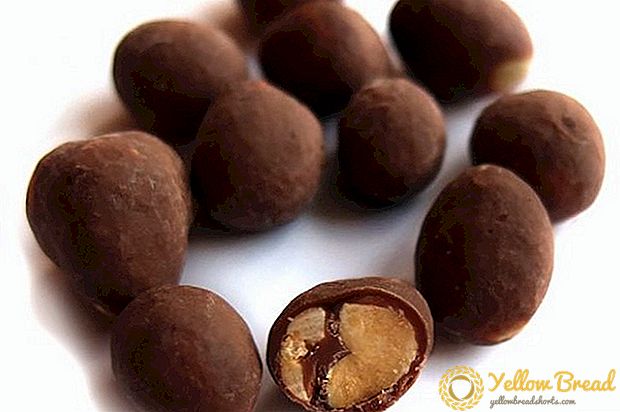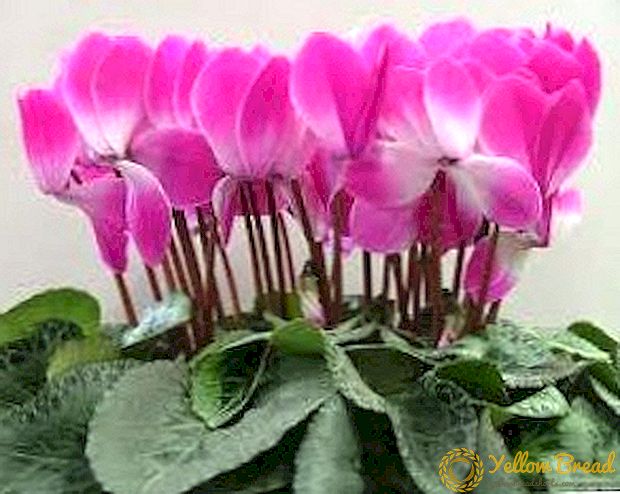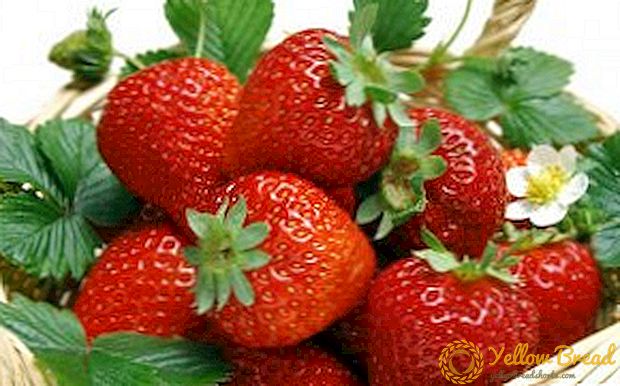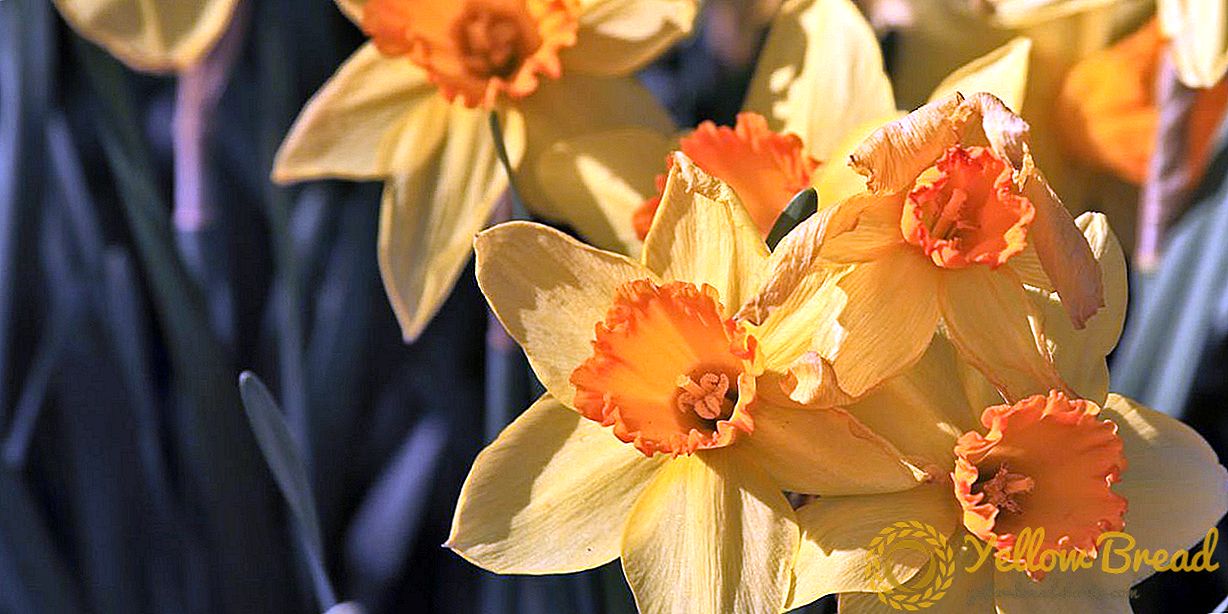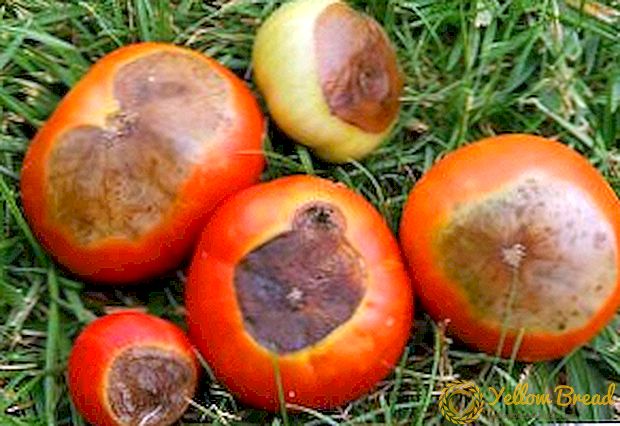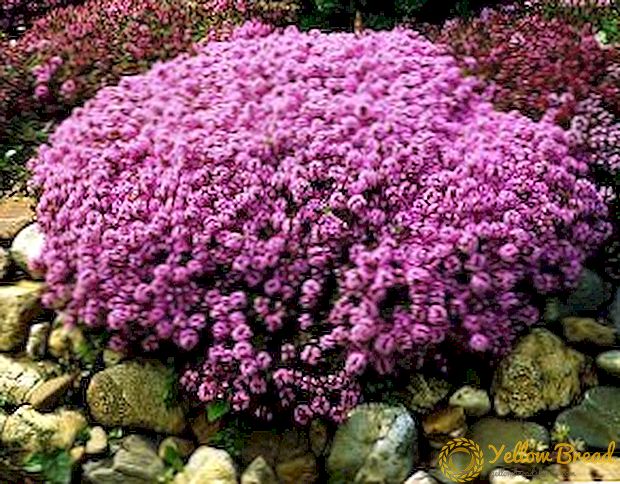
Have you heard of the Chizhov pear?
And maybe you have enjoyed its juicy taste and have a desire to plant such a tree in your house?
In our article we will consider everything that is needed for this.
- Description of the fetus (advantages, disadvantages)
- Description of the tree (advantages, disadvantages)
- How to plant a pear?
- Care is important for a good harvest.
- Watering
- Pruning
- Fertilizer
- Pest Protection
Description of the fetus (advantages, disadvantages)
Chizhovskaya hybrid pear bred by Russian breeders, which was obtained by crossing two good varieties. From the first (Forest Beauty), the new variety got an externally attractive look and wonderful taste, and from the second (Olga) - resistance to severe frosts.
In appearance, the pear is not very large, the average weight is 130 grams. It has the usual pear-shaped and yellow color, with pale pink tint, mainly on one side. Pulp the fruit is light, almost white. It cannot be said that it has a strong aroma, but its taste is excellent. With light sourness, which gives it freshness.

What can be attributed to the pluses of this variety? Select the earliness.The tree will bear fruit after three years from the moment of its inculcation. Long-lasting product appearance is also important. Fruits can be stored for a long time (up to four months at 0ºС).
In addition, they are hard enough to travel long distances, although their transportability is estimated as average. An important advantage is the minimum shedding of fruits, even with gusty wind. And what can we say about the yield! 40 pounds of pears, even in the most lean year - no problem!
The taste is also very high. So have a fruit find limitations - even problematic. They have the tree itself, like plants, but we will discuss this later. But pear, as a fruit, you can put 5 points out of five.
Description of the tree (advantages, disadvantages)
Now let's talk about the tree itself. It does not differ in special height and has an average height. Crown as it grows, changes its shape (from narrow to pyramidal), rather thick, but does not possess excessive foliage.
You can characterize it as sprawling, which allows you to harvest the crop without any problems and special adaptations. Themselves leaves without pubescence on both sides, serrated edges.
But what the biggest plus at our tree? This is its high resistance to lowering the temperature, which we mentioned earlier. During the flowering period, it withstands frost down to minus three degrees. That is why this variety has found a huge number of fans among gardeners living in the northern regions, where spring can be quite cold.
It is impossible not to single out, as a plus, the self-fertility of our pear. You will get your crop even when other pollinators are not growing nearby, and even if you plant a couple of fruit trees near you, then wait for the crop to increase by at least 10%! On the advice of breeders for this best fit varieties Rogneda and Lada.
Everything seems to be so good and smooth: the taste is good, and stored for a long time, and our tree is not afraid of frost, but, like everywhere, there must be some cons and disadvantages? And, unfortunately, they are. But how much they are essential, each gardener to decide independently.
Another significant drawback is its low resistance to various pests. Every bug and strives to nibble the leaves or eat a tasty pear, making us completely unnecessary holes, which worsen the presentation. And this will have to constantly fight. We will still have time to talk about how to do this, but in the meantime we will learn how to plant the Chizhovskaya pear and all the details of caring for it.
How to plant a pear?
So, let's proceed to the most crucial moment - the planting of our pear. True, meanwhile, verbal. Everything depends on this procedure: how we plant it, we will harvest it in the end. The most basic is the choice of location. The soil should not be clay!

Best option - soil with chernozem or loamy. Be sure to feed the soil, fight with its high acidity with lime. We bring 25-30 kg of humus, 200 grams of potassium chloride, one and a half kilograms of superphosphate and the same amount of lime into the pit.
For the rest landing principle Little different from planting ordinary pears. Spring is the best time for this. But the pit under the landing will not be superfluous to prepare in the fall.We dig a hole 70 cm in diameter and one meter deep, remove the top of the soil, we will need it.
At the bottom we lay humus, sand, potassium sulfate, superphosphate and cover it with earth, which was laid. This is necessary so that the roots at an early stage of development do not come into contact with too “aggressive” fertilizers that can harm them.
In one bucket of water we plant two glasses of lime and pour it into a hole, then pour another 2 buckets without any impurities, fill it with fertile soil and let it wait for spring. Further, all without features. We make an indentation so that the roots are freely placed, without wrinkles, we do not deepen it strongly, we sprinkle it and pour in water (3 buckets). We mulch with peat. We begin the formation of the tree immediately, cutting off by one third.
Care is important for a good harvest.
Watering
While the tree is young, it is very painful experiencing a lack of moisture. Therefore, watering is very important. Need to water copiously and quite often (4 times a month), but with caution, bypassing the stem and leaves. When the root system is strong enough, you can reduce watering to one time, and over time it will be enough food from the soil.
Pruning
Pear light-requiring, and therefore the correct pruning of branches helps it to exist in the best conditions and is an important step in the process of caring for a tree. Only by cutting off it is important not to overdo it. It is a mistake to think that the smaller the branches, the richer the harvest. Recommended to cut off the internal branches and leave the lower ones, since with proper care they are able to give an excellent harvest.
Fertilizer
As mentioned above, in this case it is important not to harm because this is also possible. Best of all, of course, to fertilize the entire land plot, but not always there are opportunities for this. That is why more often they do as we have described above - fertilizers are placed directly in the pit.

What else needs to be remembered and know when approaching this process? Helpful it would know the composition of the soil and conduct an agrochemical analysis, but, again, this is rarely done. Because you need to follow the universal tips. We all know that both deficiency and excess nitrogen negatively affect plant development. If it is missed, it will be noticeable on the leaves. They will experience underdevelopment.
But if there is a lot of it, then this will reduce the frost resistance, which distinguishes our pear variety. Phosphorus, potassium, calcium - are also necessary for the proper development of any plant. It is important to adhere to a certain ratio between nutrients.
For pears, the ammonium form of a combination of phosphorus and nitrogen is suitable. This may be ammonium sulfate or ammonium nitrate. The best proportions: 3 parts, for example, ammonium, 1 part superphosphate and 4 parts of a substance containing potassium.
As practice shows, this ratio is the most effective and beneficial effect on the development of the pear tree. Manure also contains all the trace elements listed. This fertilizer is recommended to be used annually, bringing to a depth of about 20 cm in the amount of two kilograms per square meter. m. Neutral acidity of the soil - the most ideal option for pears.
Therefore sour soil cannot be fertilizedcontaining this chemical element, without prior introduction of lime. If you consider yourself to be experienced gardeners and are one hundred percent sure that this or that microelement is deficient, you can also feed them using a spraying method using a urea solution (40 g per 10 l) or boron solution (10 g per 10 l).
Both spraying is carried out after the tree stops flowering (on the sixth day), the treatment with urea is repeated after two weeks, and with boron and during the ripening of the fruit. In any case, approaching the process of feeding, take as a rule the phrase: it is better to not saline than to salt!
Pest Protection
For Chizhovskaya pear danger are the same diseases and pests that usually attack an apple tree and an ordinary pear tree. There are many of them, but we will try to consider the most basic ones.
Pearbug tends to feast on pear juice. For the winter, he hides in the fallen leaves, and in the spring he activates and starts the attack. Therefore, in the autumn you need to collect and burn all the leaves that have accumulated in a tree.
Another pear lover is a pear trumpet worm. This type of pest is highly resistant to frost and is very prolific. Also tend to hide in the foliage and penetrate into the soil. The methods of struggle are the same as with the pear bug.
If you notice irregularities and deformations on the leaves, then, most likely, the tree is affected by a tick. This parasite overwinters in the plant's buds and feeds on sap.Spraying of colloidal sulfur will help here.
Pear moth harm the appearance of the fetus, making it inputs to penetrate to the bone. Spraying with benzophosphate will help get rid of it.

By spraying Do not forget about the basic rules in this matter:
-prepared solution is used on the same day;
- we process trees under favorable weather conditions (windless, no precipitation);
- fruit trees are treated before flowering, a week after it and 20 days before harvesting;
- we start spraying from above; we carry out processing on all site;
- try to cover the upper and lower parts of the sheet;
- do not forget to protect yourself with a mask, goggles and at the end of the procedure, thoroughly wash your hands;
- fruits before the use also need to be washed;
-Remember that some chemicals are very aggressive and are capable of causing harm to the tree, and therefore it is better to perform testing by processing one branch, look at the reaction, and only after that spray the entire tree.
In addition to parasites, garden trees pesters all sorts diseases. Thus, the appearance on the leaves of a large number of gray spots with dark edges indicates a disease such as septoriosis. It occurs less often than scab, but it is possible.And scab is perhaps the most common disease among fruit trees. And although the pear variety of Chizhovskaya is quite resistant to it, there are cases of defeat, of course.
In the fight against these diseases, too helps sprayingconducted in three stages. More often for this purpose they use copper sulphate, Bordeaux liquid, and among less aggressive ones - a solution of table salt (per 10 liters of water - 1 kg of salt). There are also many popular ways of dealing with pests and diseases of fruit trees. With success use infusions of tansy and bitter wormwood.
We hope that our article will help you to learn something new and useful for yourself, and soon your garden will be decorated with such a wonderful tree as the Chizhov pear.

